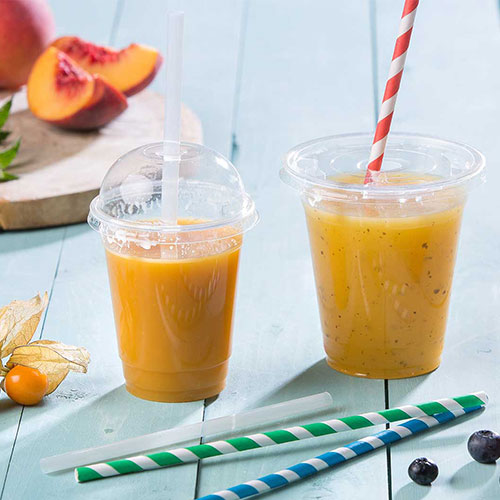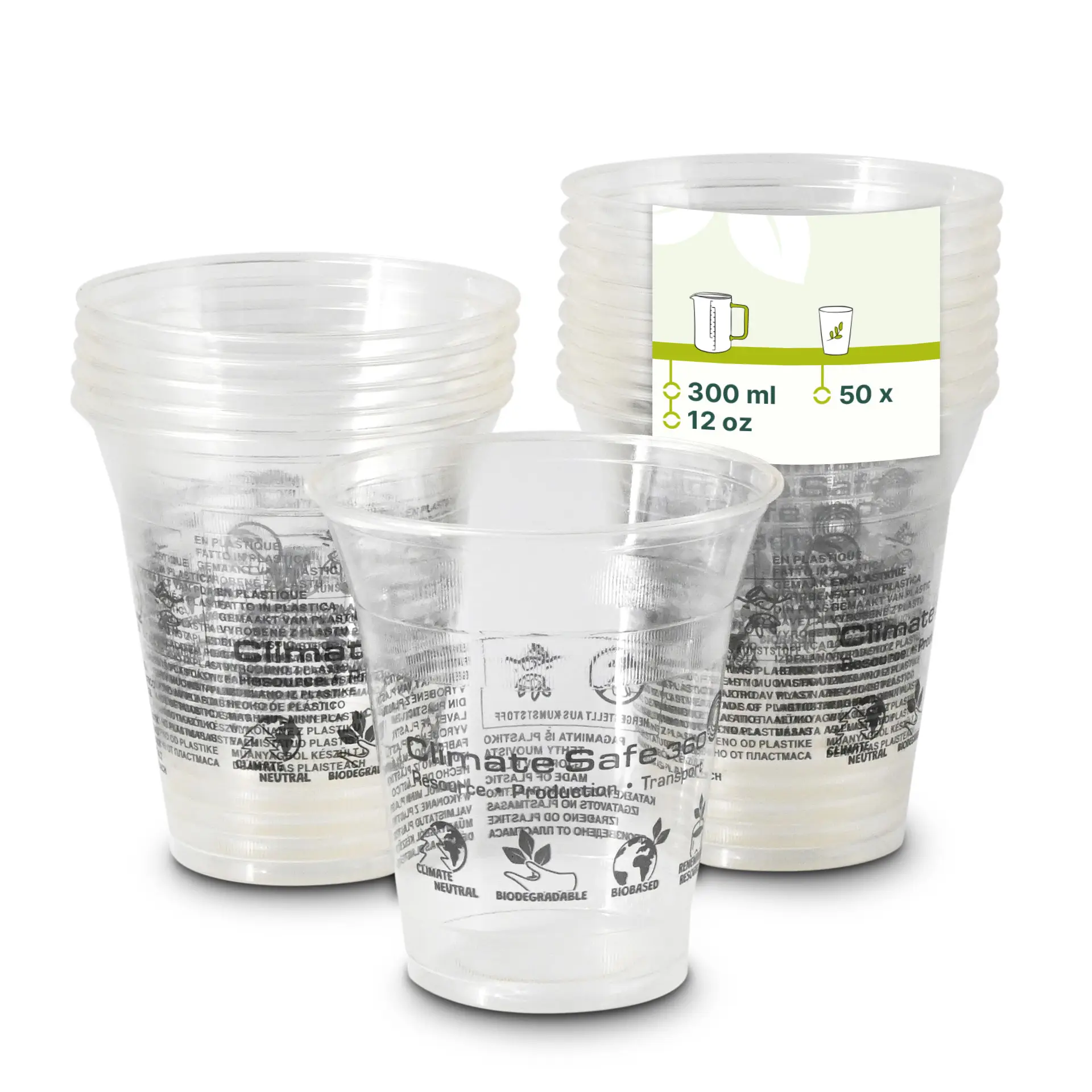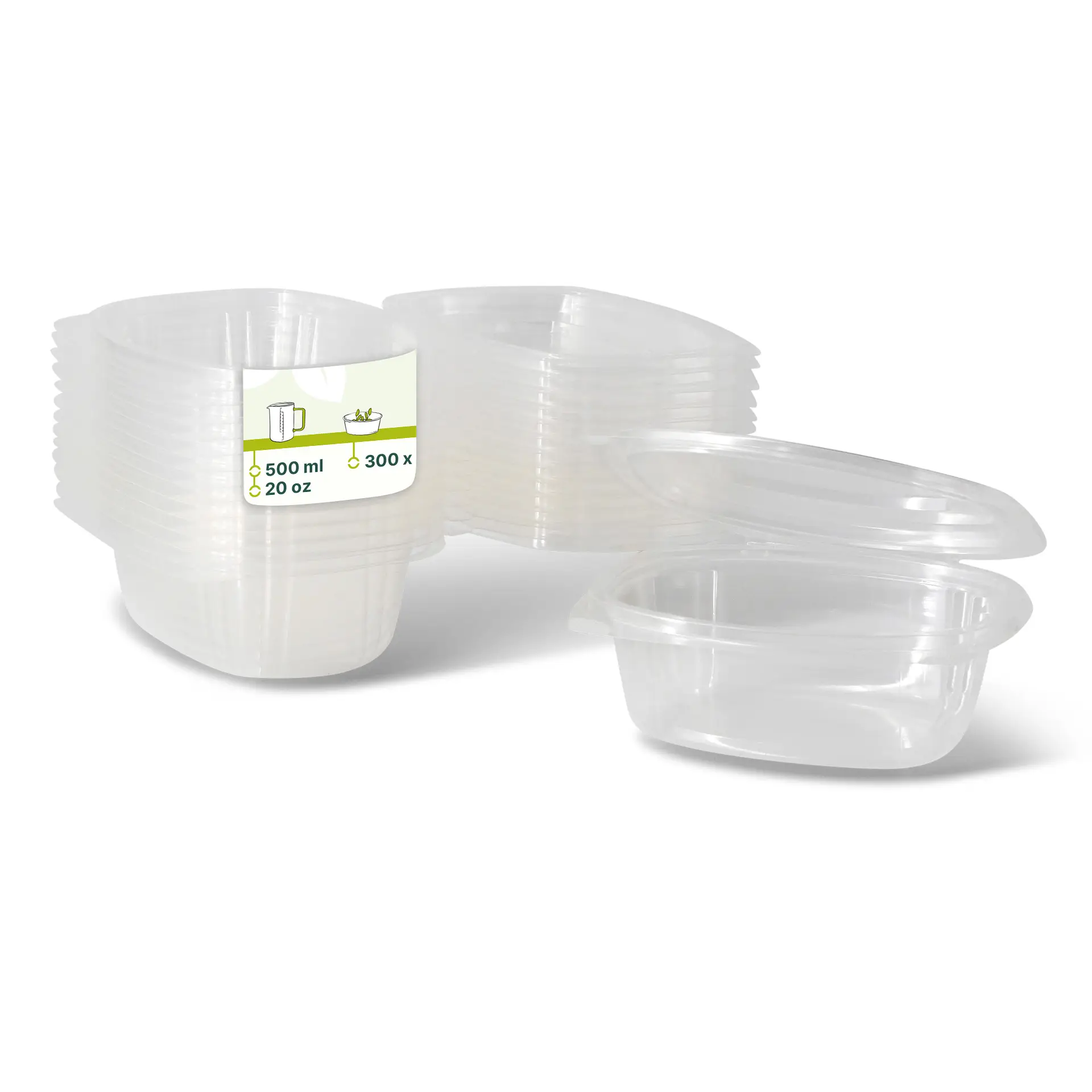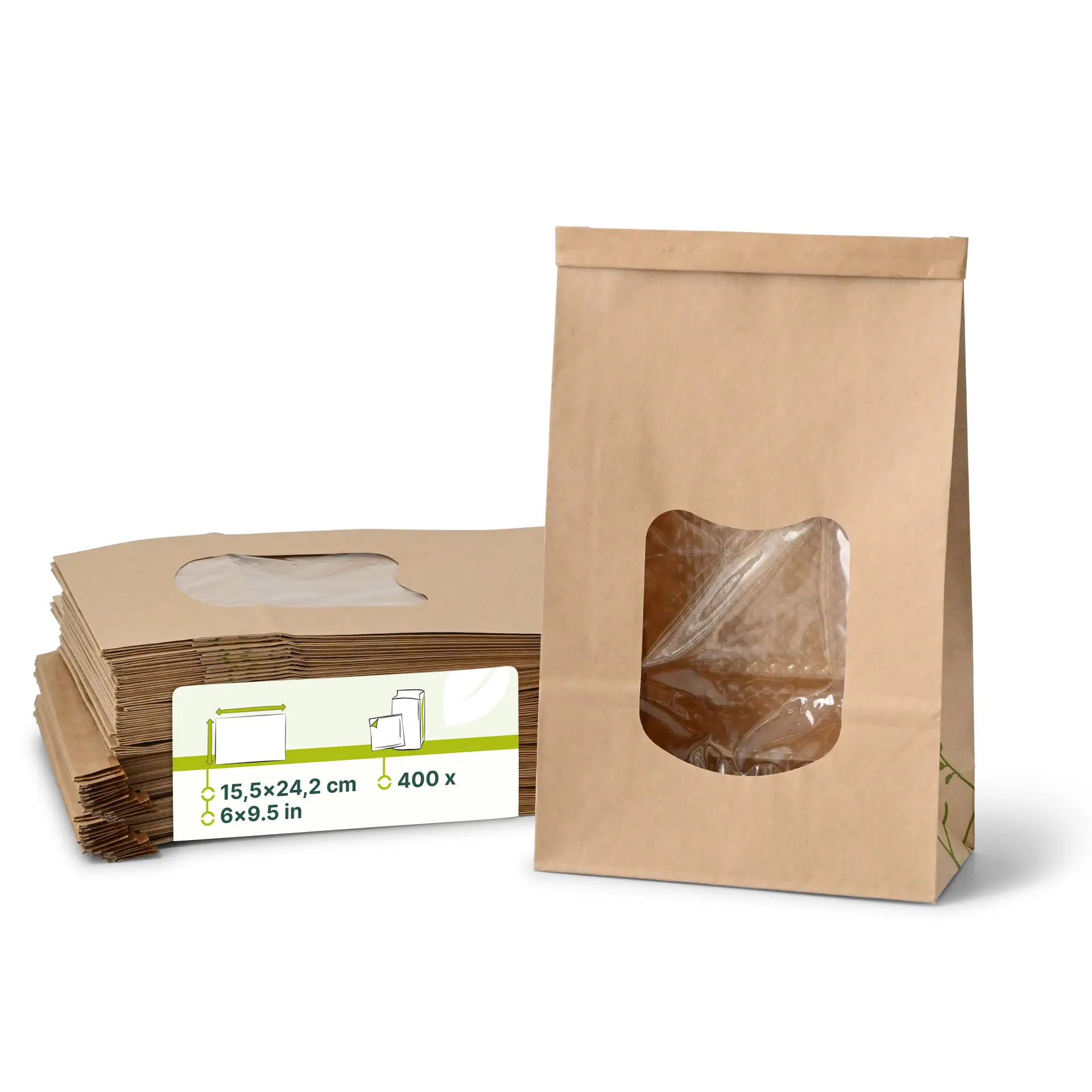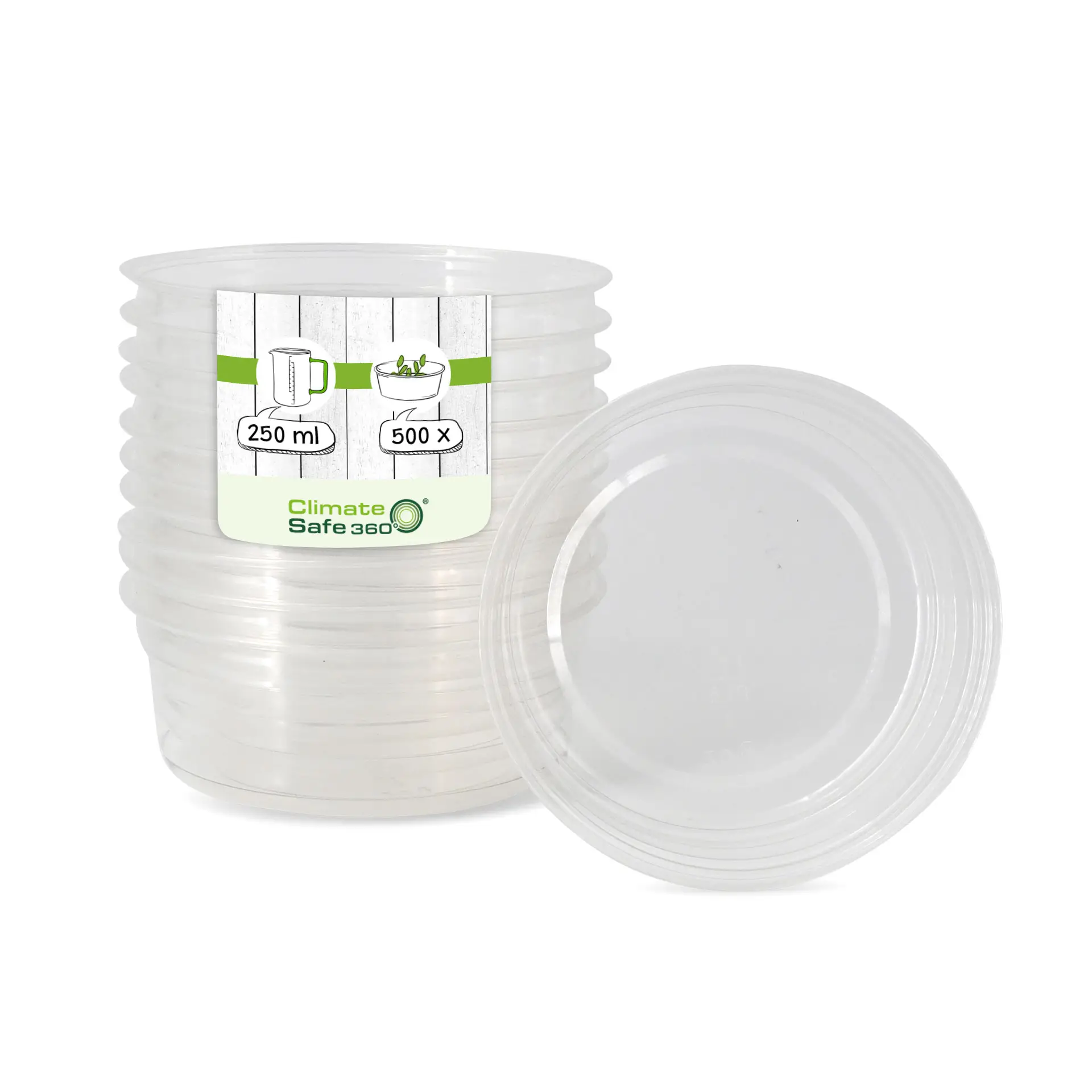What is bioplastics and what is it used for?
For some, bioplastics are plastics that are produced based on renewable raw materials. For others, they are all plastics (including petroleum-based ones) that are biodegradable. Our bioplastics are both: made from renewable raw materials as well as biodegradable. Most of our plastic products consist of the bioplastic polylactic acid (PLA), which is produced based on plant starch. Only our carrier bags are made of Mater-Bi®, which contains plant oil (no palm oil!) in addition to plant starch.
Bioplastics are used as more environmentally friendly alternatives to petroleum-based plastics such as PP (polypropylene) and PS (polystyrene). They have comparable properties: they are transparent and can be easily processed into various objects, such as cups or bowls. This is also where we find their most important sales market: the packaging industry, especially for food. This is because, unlike conventional plastics, biological plastics can be disposed of together with food waste. The legal framework for disposal is regulated by the German Packaging Act (Verpackg) and the Biowaste Ordinance (BioAbfV).
Currently, only 0.05 percent of industrial starch production is used for biobased plastics. This means that only a small proportion of conventional plastics are currently substituted. Nevertheless, according to various studies (including "Global Bioplastic Market Forecast to 2020", 2016 & "Market Study Bioplastics" by Ceresana, 2014), bioplastics have an enormous market and growth potential, because production technological progress and capacity increases make them more competitive than petroleum-based plastics. It is expected that the share of bioplastics will continue to increase in the coming years and replace the old plastics.




